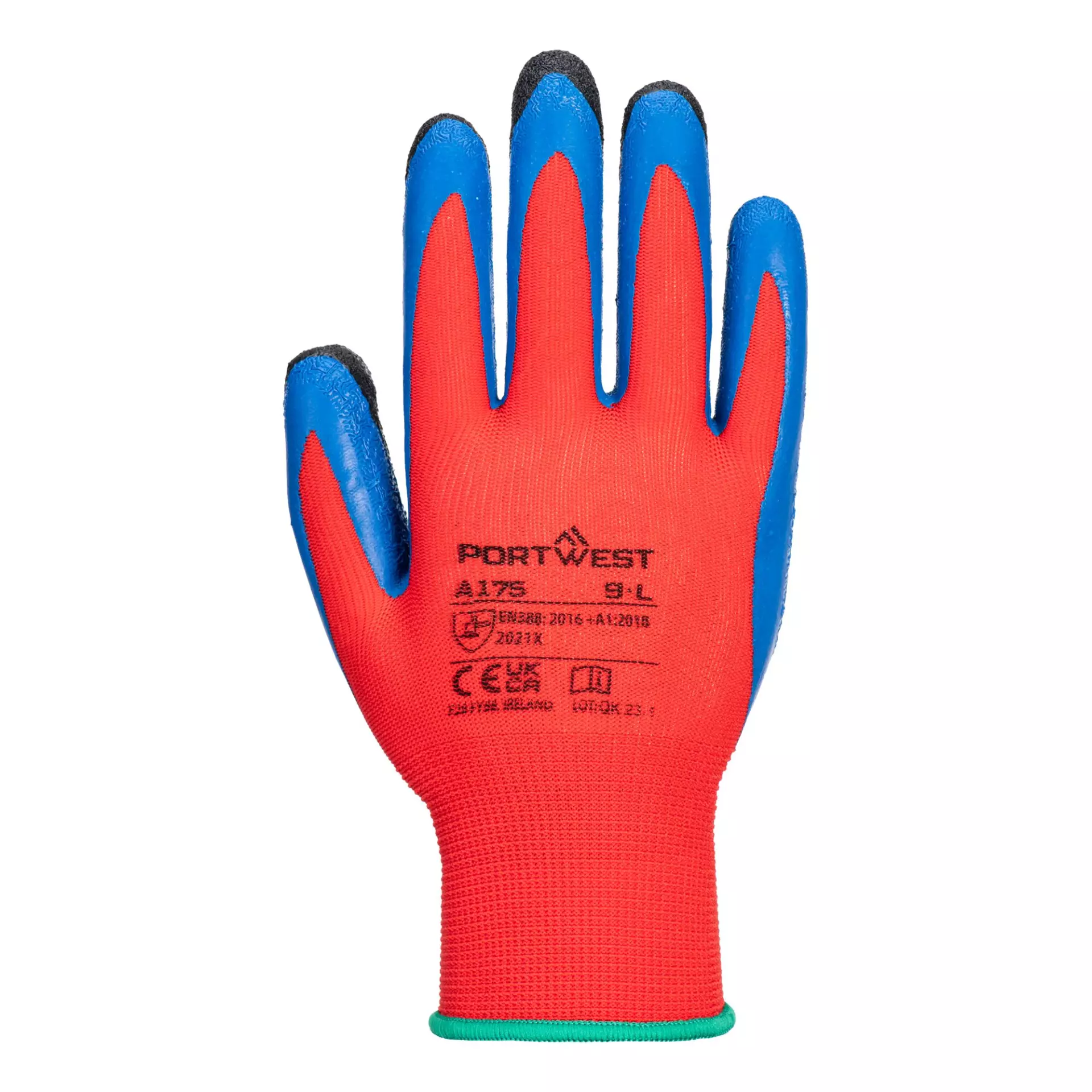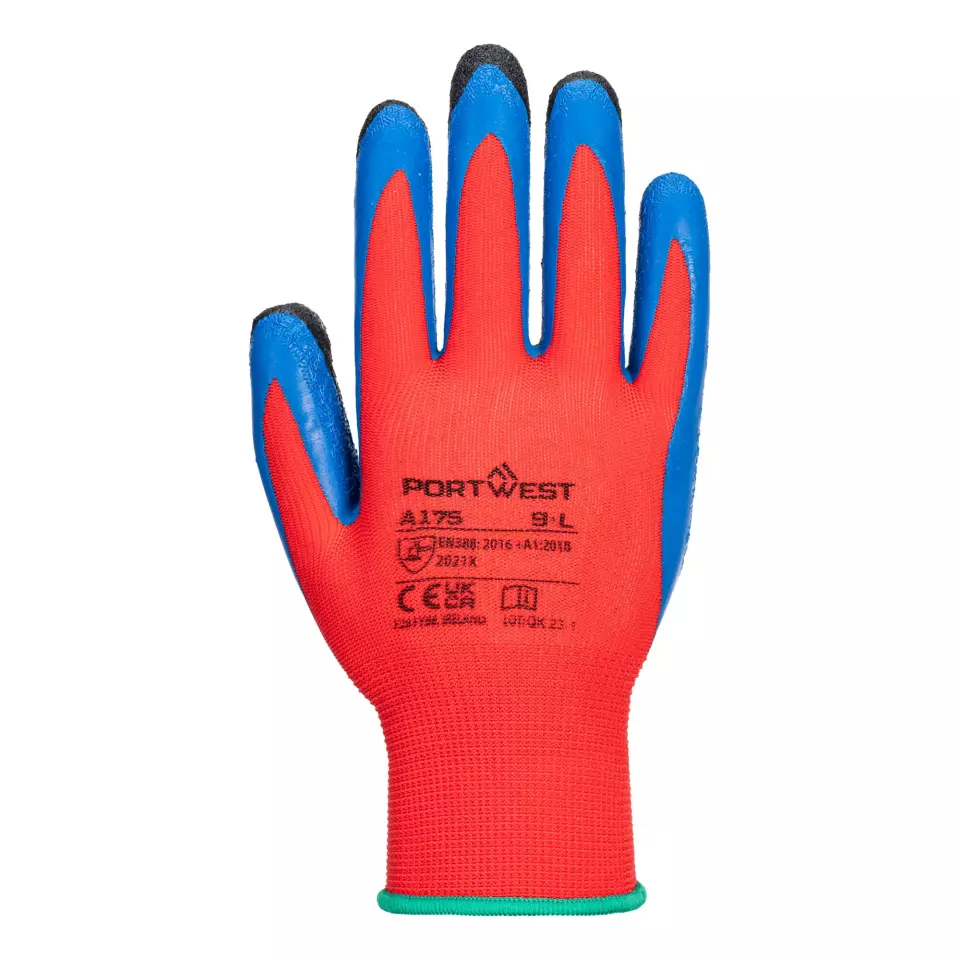
Features You'll Love

EN 388 · Puncture Resistance Level 1
Provides basic protection against punctures from blunt objects like splinters, not sharp points like needles.
Portwest
Duo-Flex Glove, Red/Blue, 12 pairs
Duo-Flex Glove, Red/Blue, 12 pairs
4.9 / 5
38,09 €
Price per 12 pairs
3,17 € / pair
Choose size
Shipping fee is 7,95 € for orders under 80,00 €
Features You'll Love

EN 388 · Puncture Resistance Level 1
Provides basic protection against punctures from blunt objects like splinters, not sharp points like needles.
Product description
Advanced protective gloves featuring dual latex coating applied through innovative dipping techniques for enhanced durability in high-wear areas. The crinkle latex surface provides excellent grip in both wet and dry conditions, while the seamless 13-gauge polyester liner ensures breathability and comfort. These gloves offer Level 5 dexterity performance and meet EN 388 mechanical protection standards.
Product Features:
- Duo-flex advanced dipping technique for double coating in crucial high-wear areas
- Dual latex coating for additional protection in tough conditions
- Crinkle latex coating for excellent grip performance
- Breathable seamless liner for enhanced comfort
- Low linting construction for minimal contamination
Technical Details:
- Seamless 13 gauge liner construction
- Polyester liner material for durability
- Natural latex coating with high elasticity
- Elasticated cuffs for secure fit
- CE certified
Standards:
- EN ISO 21420:2020 Dexterity 5
- EN 388:2016 + A1:2018 (1131A)